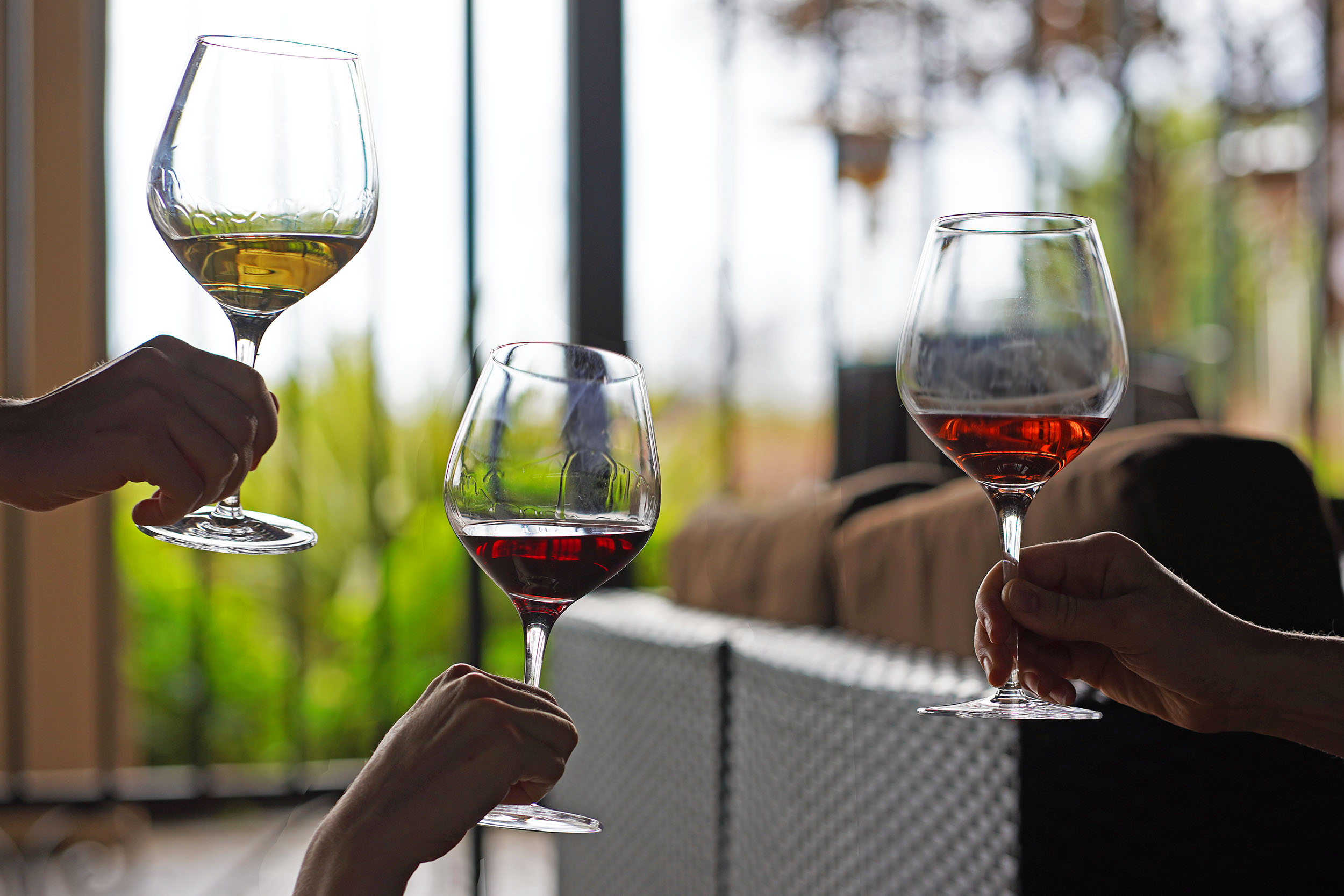A Quick Guide to Describing Wine

At Ruby Hill, we strive to make wine approachable. Wine lovers of all kinds are welcome here! If you have ever felt overwhelmed by wordy tasting notes or just want to know more about how to describe wine, you’re in the right place.
If you don’t sense the subtle nuance of wild strawberry jam, graphite, or petrichor that your neighbor does, you’re no less of a wine lover. Still, if you want to hone your wine description skills, there are a few places to start that will empower you to taste what makes a wine refined and elegant! Wine tasting is all about engaging the senses for optimum enjoyment, so ask yourself a few questions:
What do you see?
Always “taste” with your eyes first! For red wines, note the depth of the hue. Is it a deep purple-black, or a bright brick red? These can give you hints about the wine’s character. Swirling the wine in your glass can also give you a hint about how rich it will feel on the palate, like the difference between whole milk and skim. White wines can range in color from very light to rich amber tones. Rosé wines will differ in color depending on the varietal from which they are made and the style in which they are made. Our Grapeful Rosé, for example, has a coppery pink hue, a picturesque indicator that it is made from our vibrant Sangiovese grapes.
What do you smell?
Don’t be overwhelmed by trying to describe hyper-specific aromas. The aroma could remind you of flowers, fruit, soil, or herbs, easily described as floral, fruity, earthy, and herbaceous aromas, respectively. A wine’s smells are usually divided into three categories: primary, secondary, and tertiary. For those who are curious, the grape itself influences the primary aromas, the winemaking process dictates secondary aromas, and the aging process provides tertiary aromas. The more you approach wine tasting with curiosity and intentionality, the more common features you will notice.
What do you taste?
Just like the aroma, focus on general descriptors that help you unpack what you are tasting. Try to categorize the character of the fruit: Is it red fruit, like a strawberry, cherry or cranberry? Blueberry and plum notes can be described as blue fruit; blackberries, black cherry, and black currant are called dark, purple, and black fruit. Each of these connotes an amount of ripeness as well. Fresh notes like stone fruit, tropical fruit, and citrus fruits are commonly used to describe light wines.
Common savory notes include leather or cigar box which help capture some of the smoky or dense notes from oak aging. Oak aging can also result in pastry-like flavors, such as pie crust, baking spice, and vanilla.
What do you feel?
Wine has much more to offer than delightful flavors. When you take a sip, think about how it feels in your mouth. Common descriptors include velvety, suede-like, or even sandpaper. A wine that makes you pucker may be acidic, but a wine that makes your tongue feel dry, like a well-steeped black tea, is tannic. A buttery wine is one that has a full-bodied ripeness, common for oaked Chardonnay. All of these qualities have their place in delicious wines.
What can you learn from the bottle?
A wine bottle can offer more information to enhance your enjoyment. The bottle will provide the vintage, indicating when the grapes were harvested, and the appellation, indicating where the grapes were grown. Each vintage and region have their own personalities! Of course, the bottle will also indicate if the wine is a single varietal, like Cabernet Sauvignon, or a blend. Every Cabernet will have some character in common with other Cabernets, though the winemaker, region, and vintage all exert influence as well. On the other hand, blends offer a wholly unique experience and often showcase a dynamic balance between diverse varietals.
It is important to remember that wine descriptions have a level of subjectivity and express the personality of the taster. We all perceive our reference points and the wine’s qualities differently, so the most important thing is to enjoy the process. Remember, it’s always acceptable to drink wines simply because you enjoy them. Life is too short to take too seriously!
Comments
Commenting has been turned off.Enjoy complimentary ground shipping when you order 6 or more bottles.
Sign Up For Our Newsletter
Keep up to date on the latest wine releases, events, and promotions.